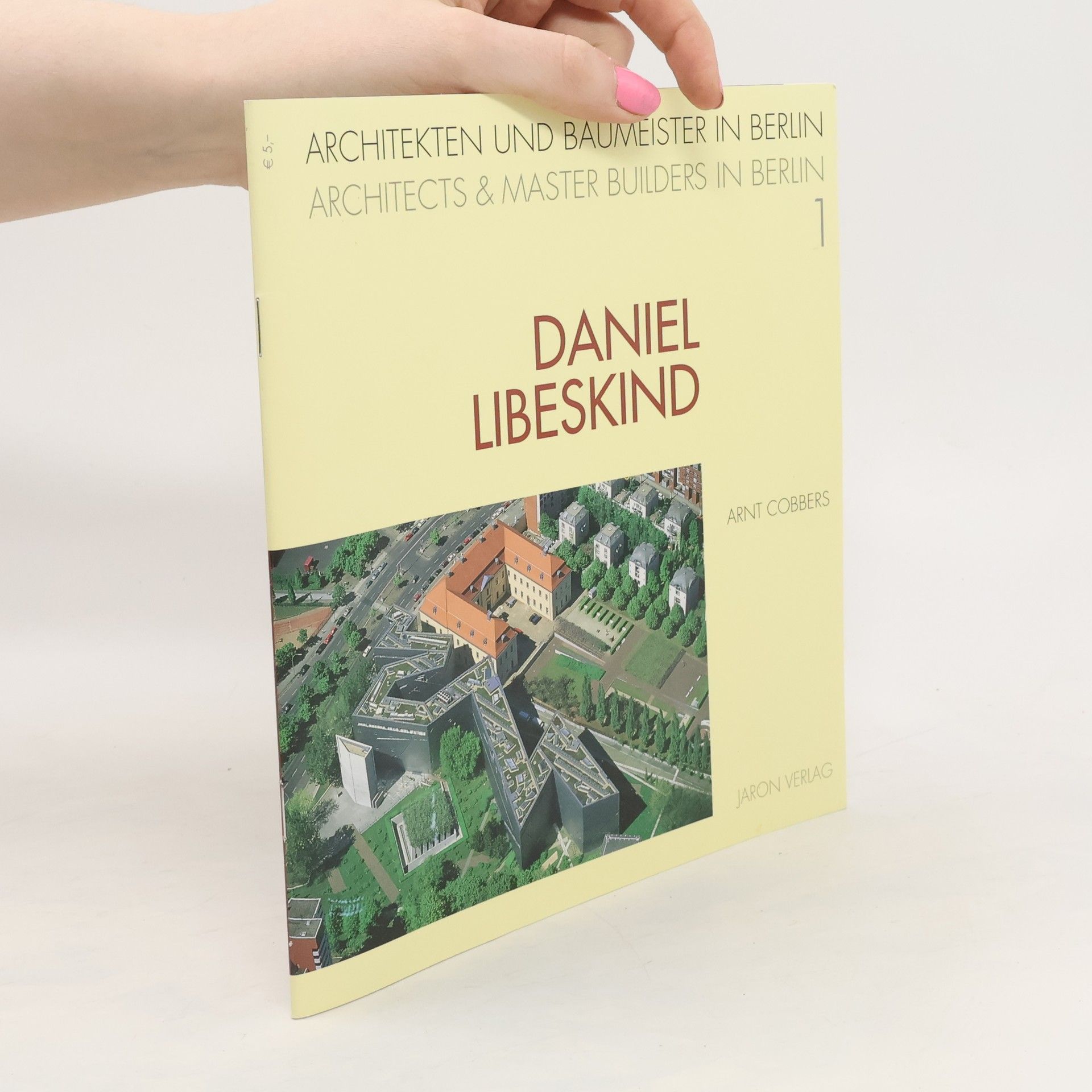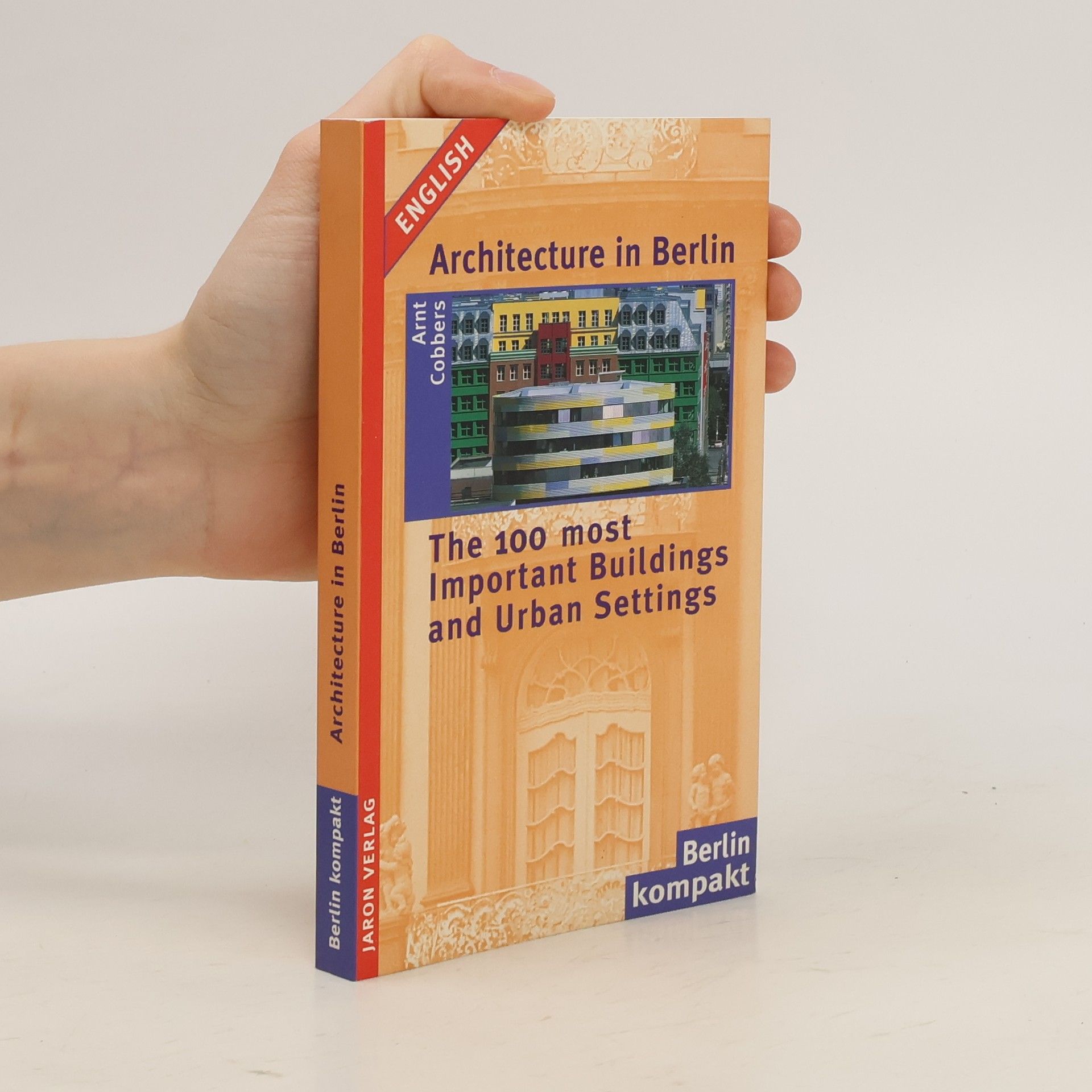Berlin – die Welthauptstadt neuer Architektur: Topaktuelle Aufnahmen des führenden Berlin-Fotografen Günter Schneider Kompakte Darstellungen des Architektur-Fachmanns Dr. Arnt Cobbers Daten, Fakten, Architekten, Adressen Mit einer Übersichtskarte und Liniennetzplan
Arnt Cobbers Libri






The more than 800 years of Berlin history is reflected in a diverse architectural landscape. Art historian Dr. Arnt Cobbers presents the 100 most important buildings in his successful handbook on Berlin architecture. Arranged chronologically according to their dates of construction, the buildings described here span from the medieval period (St. Nicholas Church) to the contemporary era (Government Quarter, Zoofenster, Humboldt-Forum) via the Schinkel period (Old Museum), Modernist industrial structures (AEG Turbine Hall) and the housing estates of the Weimar Republic (Britz 'Horseshoe' Estate). The author explains each building in terms of its period of origin, architect and cultural and historical context.
Berlin under Hitler
Tracing the Past: Places, Buildings and Events 19331945
There is hardly another city in the world with a more dramatic past than Berlin – and traces of this past can be found at every turn. The book series Tracing the Past Today invites readers to visit these exciting sites of history. Berlin under Hitler takes the reader back in time to the Reich capital during the years 1933 to 1945. Eight tours of Berlin lead to the many sites that still convey the atmosphere and history of the Nazi dictatorship. The book also contains 120 historical and current photos, emblems and documents, as well as a map and an index. Tracing the Past Today takes the reader on a breathtaking journey through time and shows how Berlin used to be and what it has become today.
Marcel Breuer
- 96pagine
- 4 ore di lettura
With his invention of steel-tube furniture, Marcel Breuer has made his mark in the history of design at the tender age of 23. Part of the "Basic Architecture" series, this book features essays exploring his life and work; the works presented in chronological order; and, an appendix including a list of works, biography, bibliography and a map.
Architekten und Baumeister in Berlin. Daniel Libeskind. 1
- 27pagine
- 1 ora di lettura
Der 1931 in Krakau geborene israelische Architekt Zvi Hecker ist bekannt für seine ungewöhnlichen Bauwerke, deren Form sich an der Funktion orientiert und oft aus geometrischen Prinzipien und mathematischen Gesetzen abgeleitet ist. Ein markantes Beispiel ist die 1991–95 errichtete Heinz-Galinski-Schule in Berlin-Charlottenburg. Die auffällige Architektur, die an die Metapher der Sonnenblume erinnert, besteht aus verschiedenen ineinandergreifenden Gebäudeteilen, die den Sonnenlauf und das Licht berücksichtigen, um die Klassenräume zu erhellen. Von oben betrachtet ähnelt das Gebäude einem aufgeschlagenen Buch. Der Architekturkritiker Dr. Arnt Cobbers beschreibt in seiner Publikation den Lebensweg und das Wirken des in Berlin lebenden Architekten. Hecker war an der Stadtplanung für Tel Aviv, Montreal und Philadelphia beteiligt und entwarf seit 1960 zahlreiche Verwaltungs-, Wohnungs- und Kulturgebäude, vor allem in Israel, aber auch in den Niederlanden, Kanada und dem Iran. Der neue Band der Reihe „Architekten und Baumeister in Berlin“ konzentriert sich auf die Heinz-Galinski-Schule, für die Hecker 1995 den Deutschen Kritikerpreis für Architektur erhielt. Die Publikation enthält zahlreiche Abbildungen, Skizzen und Simulationen und bietet einen informativen Einblick in das Gesamtwerk des international renommierten Architekten.
Daniel Libeskind in Deutschland
- 111pagine
- 4 ore di lettura
Daniel Libeskind ist einer der erfolgreichsten Architekten des postmodernen Dekonstruktivismus. Seine Architektur verbindet Inhalt und Form in ganz besonderer Art und Weise. International an so außergewöhnlichen Projekten wie der Errichtung des Denkmals am New Yorker Ground Zero beteiligt, hat er auch in Deutschland mehrere einzigartige Bauwerke geschaffen. Ob die Libeskind-Villa in Datteln, das Felix-Nussbaum-Haus in Osnabrück oder der Düsseldorfer Kö-Bogen – Libeskinds Gebäude bestechen durch ihre ausgefallenen Konstruktionen. Die bedeutendsten Bauten des US-amerikanischen Architekten hierzulande sind das Jüdische Museum Berlin und das Militärhistorische Museum Dresden. Sie rückt der Kunsthistoriker und Architektur-Experte Dr. Arnt Cobbers in den Mittelpunkt seines Text-Bild-Bandes über das Wirken Daniel Libeskinds in Deutschland. Cobbers beschreibt den Lebensweg des Architekten, gibt einen Einblick in dessen Arbeitsweise und widmet sich den bereits realisierten, im Bau befindlichen und den geplanten Bauten Libeskinds in Deutschland. Die beiden spektakulären Museen in Berlin und Dresden werden als Musterbeispiele für den eigenwilligen Stil des Architekten vorgestellt, dessen Genialität vor allem darin liegt, Geschichte durch Architektur auszudrücken. Das mit zahlreichen Fotografien, Skizzen und Simulationen bebilderte Buch ist ein perfekter Begleiter durch die architektonische Welt Daniel Libeskinds.
New architecture in Berlin
- 126pagine
- 5 ore di lettura
After the Wall fell in 1989, Berlin became the largest construction site in the world. Many important architects realized their innovative ideas here, especially on the vast areas of barren land left behind by the dismantled border fortifications. The German capital has evolved into an El Dorado of new architectural styles. In this richly illustrated book, art historian Dr. Arnt Cobbers and photographer Günter Schneider provide an overview of the many superb structures that were erected in Berlin after reunification.
Augustus the Strong
Tracing the Steps of the Elector of Saxony in and around Dresden
Augustus the Strong, one of the most enigmatic figures in Saxony’s history, was a man of many talents: commander-in-chief, statesman, art collector, hunter and ladies’ man. Evidence of his wide-ranging influence can be found all over Saxony: He designed Dresden, the royal seat of power, into a baroque metropolis with magnificent architecture and unique art collections that attracted visitors from all over Europe in the 18th century. Extravagantly furnished palaces and lusciously designed gardens along the Elbe River attest to the glory of the electoral court. Augustus, his affairs with women and his proclivity for pomp and pageantry, continue to be shrouded in legend still today. This book is both an intriguing biography and an entertaining travel guide: Tracking the journey of his life, it leads readers to sites in Saxony that continue to imbue the presence of Augustus – Dresden, the Moritzburg Castle, the Königstein Fortress, and more. Brilliant photographs bring to life the baroque world oft the Saxon elector.
